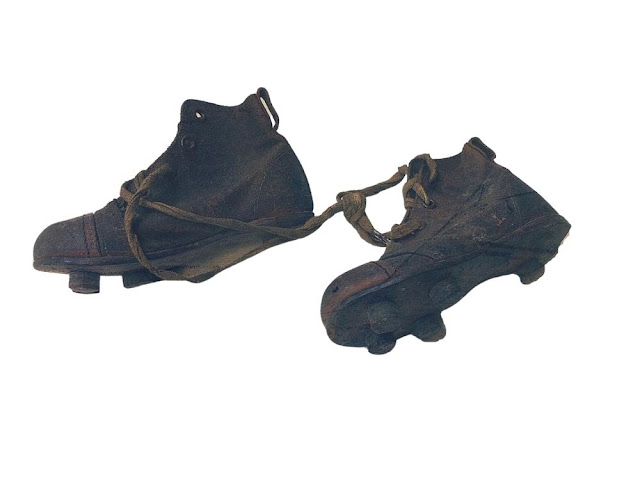Soccer has been played for more than 2,000 years. An early version of football was played in China in the second and third century BC, according to FIFA's "History of Football" encyclopedia.
Additional proof of related games has been discovered all around the world throughout history. However, the "Cambridge Rules" were not formally created until 1848.
 |
A much more fascinating story is how soccer has transformed and is still changing in its modern incarnation.
 |
| Modern Soccer Shoe |
How Has Soccer Changed Over the Years?
- Technology
- Media
- Social media
- Tactical development
- Style of play
How Have Soccer Rules Changed Through the Years?
- In 1869, goal kicks were introduced.
- Goalposts didn't get crossbars until 1875!
- In 1891, penalty kicks were first used.
- In 1990, the offside rule as we know it now was adopted.
- The pass back rule, which prohibits goalies from touching the ball with their hands after it has been intentionally passed to them, was first implemented in 1992.
- In 2013, goal-line technology was introduced.
- 2017 VAR was first introduced.
 |
| Social Media Icons |
Not only does social media allow soccer organizations to share content with their followers, but it also encourages engagement with fans and helps build valuable relationships.
Each platform serves a different purpose and has changed the sport in a different manner.
V.A.R
A Video-Assisted-Referee is an external official who reviews decisions made by the in-game referee through the use of video. V.A.R and the in-game referee communicate live via headset.
 |
| Assistant referee – Soccer |
There has been no getting away from V.A.R since it was made available to a global audience in 2018. Since then, it has had a role in the two largest cup finals in international soccer:
Despite having a significant influence on the sport, V.A.R hasn't exactly received a warm reception. Judgments made by V.A.R are still regularly disputed by players, coaches, pundits, and fans.
How Has Soccer Been Affected by VAR Technology?
This is magnified when in-game events are closely examined, which puts referee calls under close examination. Many people believe that V.A.R has ruined the game too much and brought forth too many undesirable changes.
It dulls the mood and slows down the game. Others think that it has shown problems with the rules themselves.
The counterargument concedes that V.A.R is a step in the right direction when it comes to the use of technology in sport, despite certain early-stage issues.
It will advance technology and help reduce human mistake (for the most part), leveling the playing field. People, get accustomed to it, V.A.R has permanently changed the rules of the game and it’s here to stay!
Sports Science And The Advancement In Soccer
Sports science plays a major role in 21st-century soccer. Player diets, gym work, out-straining sessions, and recovery activities are carefully measured and analyzed.
At the highest level, much of team analysis is data-driven. Wearable technology is used to track player work-rate, distance covered and types of movements carried out in games and training.
 |
| Sports science in soccer |
These upper body compression vests contain state-of-the-art athletic instruments used to gather data on every movement that a player makes.
This data can then be used to analyze players’ output and performance. It can also be used as a guide for recovery to ensure that injury preventative measures are being taken.
A huge emphasis is now placed on recovery in the modern game.
Thanks for visiting.





0 Comments